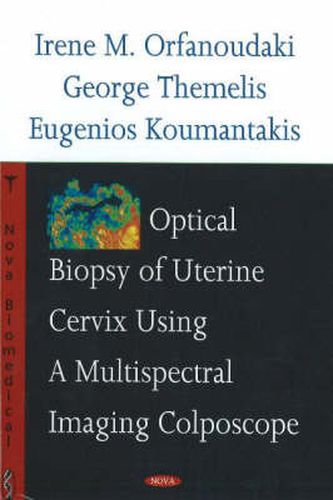Readings Newsletter
Become a Readings Member to make your shopping experience even easier.
Sign in or sign up for free!
You’re not far away from qualifying for FREE standard shipping within Australia
You’ve qualified for FREE standard shipping within Australia
The cart is loading…






Worldwide, cervical cancer is the most common form of cancer in females under 35 years of age and the second most common in females of all ages. Limitations of the existing diagnostic methods have led to the development of new diagnostic approaches. Acetic acid is a marker used for more than 70 years in gynaecology and can identify the transformation zone and detect acetowhitening changes identified as abnormal, while normal areas are not affected. A new Multispectral Imaging Spectroscopy System has been designed and developed (MIS-Colposcope). The MIS-Colposcopy is based on the quantitative and objective assessment of the acetic acid-cervical tissue interaction by means of the Multispectral Imaging Spectroscopy System (MIS-Colposcope). The method was used for the in vivo detection of cervical intraepithelial neoplasia and the results, from measurements of 123 women, indicated that there is a strong correlation between the histological condition of the tissue and the kinetics of the acetowhitening development. The best fit of the time course measurements of acetowhitening was achieved by the triple exponential function. Statistical analysis of several parameters that characterise the acetowhitening kinetics, had indicated that the combined evaluation of the parameters that express the duration and the intensity of acetowhitening differentiates sufficiently all the examined histological conditions. Estimation of the sensitivity and the specificity of this method indicate that its diagnostic performance is comparable or better than that of the existing methods. The authors’ data show that this approach may be used as a sensitive and specific non-invasive colposcopic method for the diagnosis of cervical lesions and for the accurate classification of intraepithelial neoplasias.
$9.00 standard shipping within Australia
FREE standard shipping within Australia for orders over $100.00
Express & International shipping calculated at checkout
Worldwide, cervical cancer is the most common form of cancer in females under 35 years of age and the second most common in females of all ages. Limitations of the existing diagnostic methods have led to the development of new diagnostic approaches. Acetic acid is a marker used for more than 70 years in gynaecology and can identify the transformation zone and detect acetowhitening changes identified as abnormal, while normal areas are not affected. A new Multispectral Imaging Spectroscopy System has been designed and developed (MIS-Colposcope). The MIS-Colposcopy is based on the quantitative and objective assessment of the acetic acid-cervical tissue interaction by means of the Multispectral Imaging Spectroscopy System (MIS-Colposcope). The method was used for the in vivo detection of cervical intraepithelial neoplasia and the results, from measurements of 123 women, indicated that there is a strong correlation between the histological condition of the tissue and the kinetics of the acetowhitening development. The best fit of the time course measurements of acetowhitening was achieved by the triple exponential function. Statistical analysis of several parameters that characterise the acetowhitening kinetics, had indicated that the combined evaluation of the parameters that express the duration and the intensity of acetowhitening differentiates sufficiently all the examined histological conditions. Estimation of the sensitivity and the specificity of this method indicate that its diagnostic performance is comparable or better than that of the existing methods. The authors’ data show that this approach may be used as a sensitive and specific non-invasive colposcopic method for the diagnosis of cervical lesions and for the accurate classification of intraepithelial neoplasias.